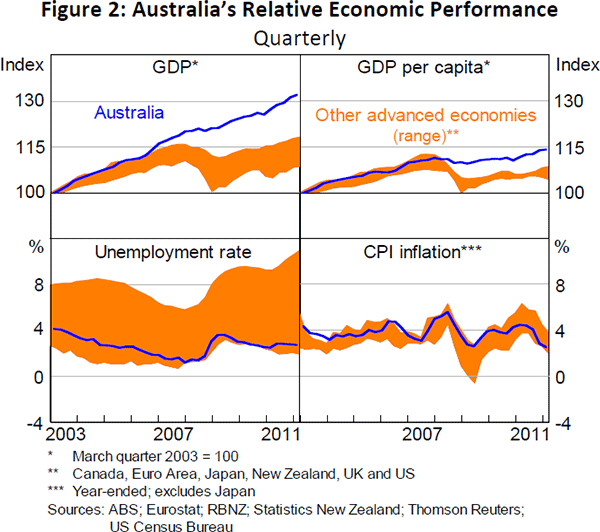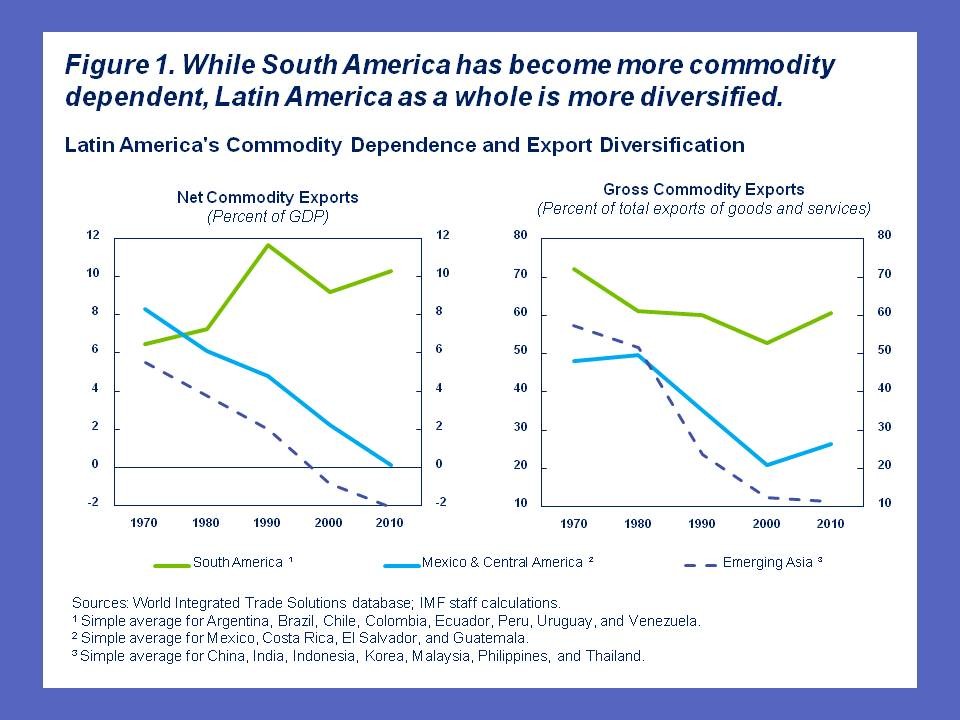Finance Development June 2012 Commodities in Boom
Post on: 24 Апрель, 2015 No Comment

Commodities in Boom
Finance & Development, June 2012, Vol. 49, No. 2
Climbing commodity prices
The global economic crisis hurt commodity prices far less than in earlier recessions. The long-run outlook is murkier
SOARING commodity prices were a hallmark of the global economic boom from 2003 to mid-2008 (see Chart 1). When the global financial crisis erupted and the Great Recession set in, prices crashed and the end of the commodity boom seemed imminent. Instead, commodity prices rebounded in the early stages of the recovery, and by the end of 2010, prices of many commodities were close to or above precrisis peaks. Except for oil, whose price is affected by increased geopolitical supply risks, commodities lost some of their luster when global economic activity slowed in 2011.
Recent price weakness may simply reflect the dire state of the global economy, but it also raises the question of whether it is time to reevaluate prospects for commodity markets. Price projections are of little help. They often fail to anticipate either the direction or persistence of price changes. This article considers commodity market developments since the global financial crisis in light of recent research on the origins of commodity price booms, which emphasizes the interaction of demand and supply shocks and low inventories as the main forces behind booms (Carter and Smith, 2011). At issue is whether andif sohow, the global financial crisis has changed those interactions.
Demand factors
On the demand side, an unexpected, persistent acceleration in economic growth in emerging and developing economies was a major force behind the commodity price boom of the early 2000s. This growth acceleration in economies where activity generally relies more heavily on commodities than in advanced economies boosted global commodity demand even as it waned in advanced economies. The average growth rates in global demand for many commodities were substantially higher during the past decade than during the 1980s or 1990s.
The global financial crisis and the Great Recession only dented the growth performance of emerging and developing economies, whose real GDP and industrial activity quickly recovered to precrisis trends as advanced economies languished. Stimulative macroeconomic policies hastened recovery in emerging market and developing economies, especially in China, where strong stimulus policies further fueled the commodity-intensive investment that spurred much of the recovery in commodity markets. The buoyant recovery in emerging markets was behind the rapid return to demand for commodities as early as mid-2009. Prices rebounded.
Global demand for base metals, for example, surpassed precrisis peaks during the first quarter of 2010 (see Chart 2). Similarly, global oil demand increased by some 3¼ percent in 2010, a rate close to the previous peak in demand growth in 2004.
These developments suggest that the global financial crisis has not fundamentally changed the demand picture in commodity markets. Per capita income in key emerging economies remains at levels where commodity demand increases as income rises. Demand in these countries is driven by long-term, structural factors in addition to the business cycle, which explains the unusual length of the current commodity boom (Radetzki, 2006).
Supply response
On the supply side, there is an important distinction between supply shocks unexpected disruptions to commodity productionand the supply response to increased demand.

Supply shocks were important in some recent price surges, especially for major grains in 2010 and 200607. The food price surge in the second half of 2010, for example, was triggered by weather-related supply disruptionsdrought and wildfires in Russia, Ukraine, and Kazakhstan and, later, floods in Asia.
The global price response to a supply disruption depends not only on how much production declines but on the size of inventories that can act as buffers. The interaction between low initial stocks and supply disruptions over the past decade has been an important factor in large food price surges. The lower the stocks relative to consumption, the more reluctant inventory holders are to sell at any price. The stocks of food relative to consumption decreased substantially over the past decade. Inventories at the time of the 2008 food price peaks were at lows comparable to those during the 197374 commodity and food price boom. Favorable harvests in late 2008, 2009, and 2011 replenished stocks somewhat, but continued robust demand has hindered rebuilding of inventories and stocks remain relatively low. Because the availability and cost of credit affect the cost of maintaining inventory, it would be reasonable to attribute some of the cause of the low food inventory level to the financial crisis. But there is little evidence to support that. In fact, inventories were low when the crisis erupted. Moreover, financial conditions do not appear to have hindered inventory accumulation of base metals or crude oil. For those cyclical commodities, inventories started rising sharply when the Great Recession set in as demand declined faster than supply and spot prices fell. But that changed quickly once stimulative measures took hold and market participants seemed willing to absorb the excess supply.
Another factor behind high commodity prices, before and after the crisis, has been the slow response of producers to the unexpected increase in commodity demand. The high cost of developing related deposits and reservoirs also contributed. Mining and hydrocarbon investment has been boominglargely free of the credit and financing constraints that affected many potential borrowers. However, new capacity has been slow to come onstream, a reflection of both the increased lag between exploration and development of new production capacity in mining and hydrocarbons and structural impediments, such as policies in some countries that restrict exploration and investment.
Supply responses are most acute in the crude oil sector, just as they were during the global economic boom of the mid-2000s. Capacity has expanded slowly, because new fields and enhanced recovery barely offset the decline in production of major oil fields developed between the 1950s and the 1970s. High-cost projects have been the primary source of additional supply. The surge in the production of harder-to-extract oil in the United States shows that technological advances can still produce new sources of supply. But such sources are small overall and unlikely to increase global oil supply capacity in the next few years.
The renaissance in the commodity sector after the listless 1980s and 1990s was not halted by the global financial crisis, the Great Recession, or the ensuing bumpy recovery. Two key factors behind the revivalhigher growth in emerging and developing economies and supply constraintshave endured.
New forces
But this does not mean that the patterns of the commodity renaissance will remain the same. Other forces are at work. The sources of growth in emerging and developing economies are changing. In China, for example, the governments latest five-year plan strives to move the economy from investment- to consumption-driven growth. This would likely change the nature of Chinas commodity demand. In particular, as constructions share of economic activity declines, demand growth is likely to slow for commodities used in construction. At the same time, the global economy is adjusting to high commodity prices. Innovation and the drive to find lower-cost substitutes will eventually lower demand and increase supply. Mothballed oil fields, for example, have been revived, as high prices make production profitable again. Low natural gas prices in the United States (from the shale gas revolution) will almost surely spur greater use of that fuel, potentially even in vehicles powered by natural gas. Still, adjustment to high prices is gradual and unlikely to drive down commodity prices quickly.
The fundamentals seem intact, but the global growth outlook is still uncertainand not just because of relatively weak prospects and the unusually high vulnerability of advanced economies. For sure, these risks have put a damper on the external demand outlook for emerging economies. But growth in these economies is also subject to domestic capacity constraints and, in some cases, rapid if not exuberant credit growth. ■
Thomas Helbling is a Division Chief in the IMFs Research Department.














